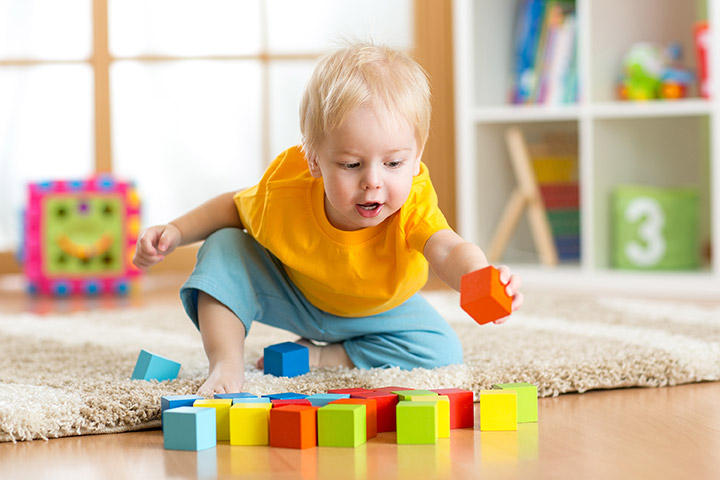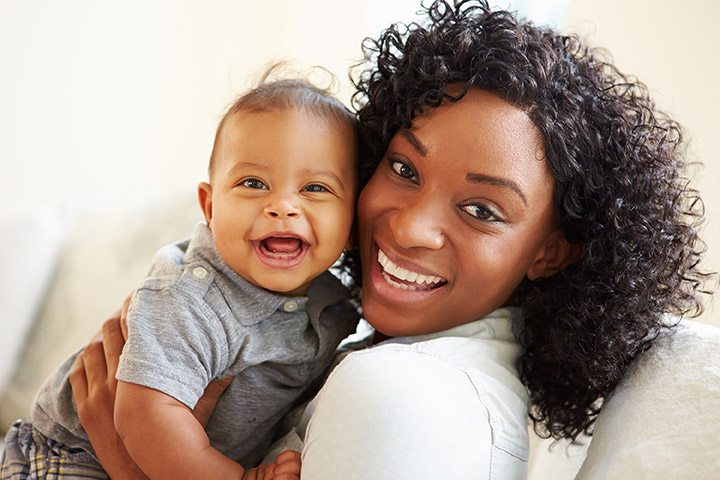Information on the following page was originally developed by a team that created a website for families focused on "raising deaf kids" (see About Us). The content may have been edited or updated.
Read this page to learn about how your baby learns and how you can help your baby communicate.
How Your Baby Learns
Babies are always learning
Being a baby means learning all the time. Your baby uses his eyes to take in information about the world.
What your baby learns
You react to what your baby does
Babies start by learning that they are people. They learn they are separate but related to their parents. They learn they can get you to do things:
- They find out they can get your attention by using their voice (sometimes loudly!).
- They find out they can get you to smile by making faces.
- They find out that you will "coo" and "ooh" and "ahhh" with them, just because they're babies!
Just like other babies, your baby can let you know what she wants. She uses facial expressions, cries, and smiles just when you would expect any baby to do so.
What a "relationship" is
When your baby sees someone is with her, she'll "lock in" on that person and study him. She'll try to figure out what's going on and join in the play.
This is your baby's first experience with a relationship. Your baby is an equal partner in it!
How You Can Help Your Baby Communicate
You can start helping your baby learn early!
Show your baby that you love him!
Showing your baby that you love him is the most important thing you can do to help him learn and grow. Use everything you've got to let your baby know that you are there, totally there!
Your baby may not hear all the nice things you say to him, or he may miss your cooing. But show your love the same as with any other baby:
 Hug and kiss your baby.
Hug and kiss your baby. - Look at your baby with love.
- Touch your baby with love.
- Give your baby attention.
Just looking at your face and knowing you're there can make your baby feel calm and happy.
Make faces and use gestures
Your baby may not hear your voice as much as other children. It may take a little time for the baby to adjust to keeping hearing devices on. Show how you feel in your face (smiling, loving looks) and using gestures.
Even if you're not used to it, use your body to express yourself when you talk to and play with your baby. The more you can make faces and use gestures, the more your baby will understand and grow.
But don't stop talking!
When we speak, we feel comfortable expressing ourselves. Most hearing people smile or frown, point or use other gestures when they talk. Communicate with your baby in a way that feels right for you.
Help your baby learn through his eyes
Babies who are deaf or hard of hearing take in information through their eyes. Teach your child to look around to see what's going on from an early age.
Gesture and look excited when something happens
When people come to your house, your baby may not hear the doorbell. He may not hear the excited voices asking for the baby. You may have to show him that something has happened. When the doorbell rings, you could:
- Look at the door and make a surprised face.
- Look at your baby, then at the door, and then back to your baby.
- Point to your ear and say, “I hear the doorbell. Let's go see!"
Pretty soon, your baby will know to look around to find out what's happening.
Read and/or sign to your baby
Get your baby interested in looking at things by looking at books. Sit your baby in your lap and look together. Gesture or sign words that are related to the book. Or if you're reading out loud, turn your body so your baby can see your face when you speak.
Visit these websites For newborn babies:
For babies 1- to 3-months-old
For babies 4- to 7-months-old
For babies 8- to 12-months-old